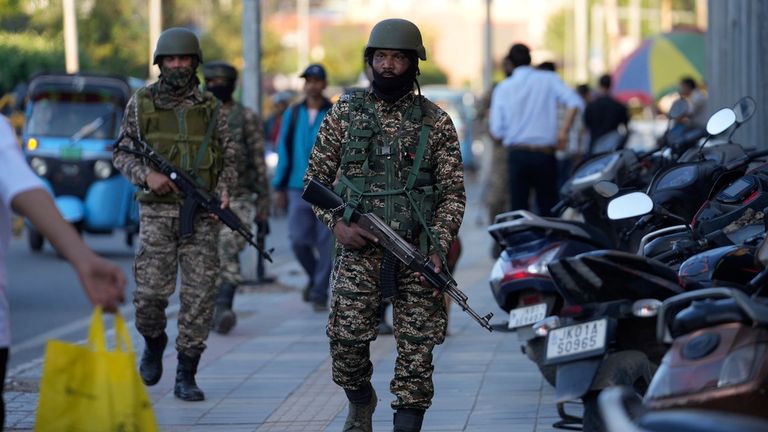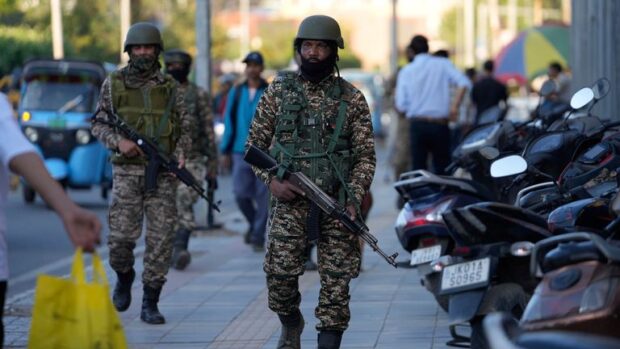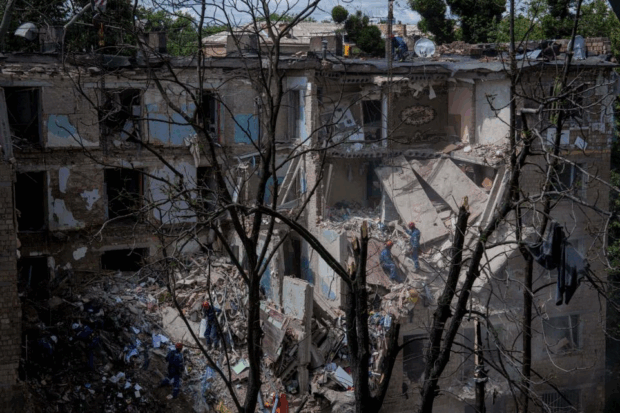
Tonight, from the volatile Line of Control that divides India and Pakistan-administered Kashmir, we are receiving deeply concerning reports of civilian casualties following a dangerous escalation of tensions. This after Pakistan’s response to India’s earlier air strikes manifested in cross-border shelling, leaving a trail of destruction and loss in its wake.
Consider the human cost. Buava Singh, a resident of the Poonch district on the Indian side, recounted a devastating scene. A mortar shell, he says, ripped through his niece Ruby Kaur’s home in the dead of night. She had simply woken to prepare tea for her ailing husband when tragedy struck. The shrapnel, Singh described, caused fatal head wounds. Ruby Kaur is now dead, and her daughter gravely injured. Adding to the vulnerability, Singh stated the absence of community bunkers in the area, forcing civilians to seek the fragile shelter of their own homes. “We have never seen such heavy shelling so far,” he somberly reported.
Across the Line of Control, in Pakistan’s Punjab province, Muhammad Younis Shah painted a picture of fear and chaos. He told the BBC that four Indian missiles struck an educational complex in Muridke. The first three impacts were rapid, followed by a fourth after a brief, chilling pause. This complex, housing a school, college, hostel, medical facilities, and a mosque, has suffered partial damage. Disturbingly, Shah noted that families also resided within the complex’s residential area, all of whom have now fled to seek safety. Rescue workers and emergency services are on the scene, but a palpable sense of panic has gripped the area.
In Muzaffarabad, the capital of Pakistan-administered Kashmir, Muhammad Waheed’s account echoed the sudden terror unleashed. “I was fast asleep when the first explosion shook my house,” he recounted. Emerging onto the street, he found others already gathered, only for three more missiles to rain down, triggering widespread panic and chaos. Waheed spoke of dozens injured, including women, now receiving treatment in a local hospital. His words conveyed a profound sense of bewilderment and fear. “I don’t understand why our local mosque was targeted,” he said, emphasizing its normalcy and the absence of any suspicious activity. The consequence, he stated starkly, is that people are now fleeing their homes, gripped by profound uncertainty.
An Indian army spokesperson confirmed to the BBC the tragic loss of three civilian lives in Indian-administered Kashmir. We await further details.
Meanwhile, the diplomatic rhetoric has sharpened. India’s Foreign Minister S Jaishankar took to X, asserting that the world “must show zero tolerance for terrorism.” His post included an image bearing the words ‘Operation Sindoor’ – India’s chosen codename for Wednesday’s strikes against Pakistan. The imagery is stark: white text on a black background, with the letter ‘O’ in Sindoor replaced by a round pot filled with vermillion powder, a symbol traditionally worn by married Hindu women. This depiction is being interpreted by many as a direct reference to the women who were widowed in the recent militant attack in Pahalgam, where all 26 victims were men.
Interestingly, within India, opposition leaders have voiced their support for the government’s actions. Mallikarjun Kharge, leader of the Congress party, emphasized the “need of the hour” as “national unity and solidarity,” stating his party’s unwavering support for decisive action against cross-border terrorism following last month’s attack. Asaduddin Owaisi, chief of the AIMIM, also welcomed the “surgical strikes” on what India claims were “terror camps in Pakistan.”
This escalation unfolds against a backdrop of heightened security preparedness within India. Just this week, the federal home ministry had ordered nationwide security drills across 244 districts, ostensibly to assess and enhance “civil defence mechanisms.” The stated objectives included evaluating air raid warning systems, evacuation plans, and civil defence services, with the aim of training civilians to protect themselves in the event of a “hostile attack.” While the order did not explicitly mention Pakistan or the Pahalgam attack, the timing is certainly noteworthy. Footage from news agency ANI on Tuesday showed rehearsals underway in various states, and more drills are scheduled for today.
Predictably, Pakistan has reacted strongly. The Pakistan Peoples Party (PPP), a major political force in the country, condemned India’s “aggression against Pakistan by targeting civilian populations across the border.” The party, led by Bilawal Bhutto Zardari, son of Pakistan’s president, asserted on X that India’s “unprovoked” attack constitutes a violation of international law, the UN Charter, and Pakistan’s sovereignty. Their statement vowed that “Indian provocations will be countered with full force and unwavering determination to protect Pakistan’s sovereignty and territorial integrity.”
India, for its part, maintains that its strikes were “targeted” at “nine terrorist infrastructure sites” in Pakistan and Pakistan-administered Kashmir, explicitly stating that no military, civilian, or economic facilities were targeted. The justification cited remains the April militant attack in Pahalgam.
Islamabad has now formally brought the matter to the attention of the United Nations Security Council (UNSC), denouncing India’s actions as “blatant aggression” and a threat to international peace and security. Pakistan’s foreign ministry conveyed to the UNSC that Pakistan “reserves the right to respond appropriately to this aggression at a time and place of its choosing, in accordance with its right to self-defence as enshrined in Article 51 of the United Nations Charter.”
The situation along the Line of Control is clearly precarious, with civilian populations caught in the crossfire of escalating tensions between these two nuclear-armed neighbors. The international community will be watching closely as this dangerous cycle of retaliation and response continues to unfold.
















Be the first to leave a comment